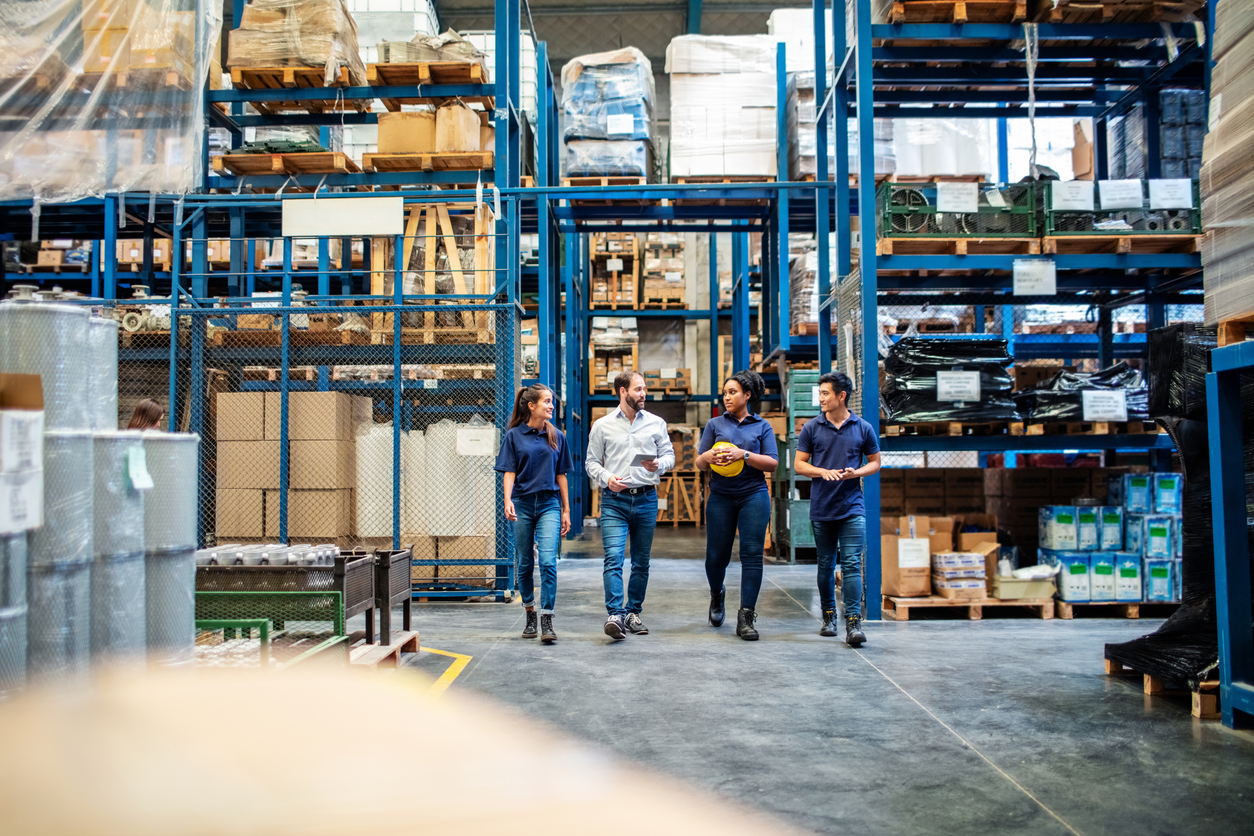Leasing vs. 3PL: Which Option Drives Results for Your Business
Business growth isn’t easy to predict. One week, you are filling orders for your e-commerce company from your garage. A month later, your home has become a warehouse. Leasing warehouse space seems to be an easy fix, but the choice between Leasing vs. 3PL can shape the future of your business.
As your company matures, you lease more and more space until warehouse management takes over your business. Logistics was never part of your vision, but it consumes most of your day. It is slowly taking the joy out of work.
Companies often find themselves in the logistics business because they never consciously decided to look at alternatives. Leasing started as a short-term solution that grew unconstrained. For some organizations, in-house warehouse management may be the right option; however, many find working with a third-party logistics provider (3PL) a better alternative.
Either option can work. What matters is deciding on a solution and committing resources to ensure success. It means weighing the pros and cons to find the best alternative for your business goals.
Leasing vs. 3PL: What Factors Should You Consider?
Although it may have the least impact on the bottom line, asking whether warehouse management is part of your vision is central to your decision. If in-house logistics isn’t part of your plan, allocating resources and addressing improvements may be a struggle. However, acknowledging that in-house warehouse management is essential to business growth forces you to commit to its success.
Deciding to use a 3PL should be the right personal and business decision. The choice should be based on more than an “I don’t want.” It should provide the flexibility, scalability, and fiscal controls to ensure growth. So, what factors should you consider when comparing Leasing vs. 3PL solutions?
Business Size
Small and midsize businesses may lack the resources to support in-house logistics, and business owners may spend more time on logistics than on running their businesses. Large companies often have access to people and financial resources to manage in-house operations. However, volume and packaging also play a part in deciding on the best logistics solution. Opting for 3PL or leasing is more than a matter of size.
Growth Potential
Determining how quickly a business may grow can prevent a home from becoming a warehouse. Finding affordable warehouse space on short notice may be challenging. The average cost of warehouse space is $8.31 per square foot, up from $7.96 in 2022. Depending on location, warehouse space may be in short supply as new construction has slowed because of economic and political uncertainties.
Growth also means having people to handle the increased volume. Labor shortages continue to plague most industries, and warehousing is not immune. Finding and retaining employees can be challenging for in-house and 3PL providers.
Expertise
Logistics complexities have not eased. Warehouse and labor shortages continue to limit industry capabilities. Port congestion and bottlenecks slow cargo movement. Understanding how to navigate the supply chain landscape requires experienced and knowledgeable talent that may not be readily available.
Flexibility
The above factors translate into the need for a flexible solution. Logistics requires agility. Yesterday’s route may not be available tomorrow. Changes in packaging or transport regulations may require modifications to existing processes. Customers demand flexibility. What was on-trend is now passe. Keeping up with changes in government regulations, consumer preferences, and supply chain disruptions requires flexibility in warehouse operations.
Is Leasing the Right Option?
When deciding between Leasing vs. 3PL, leasing warehouse space to support in-house logistics depends on the value of the following:
- Control. In-house logistics gives businesses control over operations, including inventory levels, stock replenishment, and fulfillment processes.
- Communication. Internal communication may be more effective than communicating with third parties. Companies may also communicate directly with consumers, receiving unfiltered feedback.
- Customized Packaging. In-house warehousing lets businesses customize packaging for personalized service.
- Company Culture. Keeping logistics in-house can help integrate warehouse operations into a company’s culture.
While building in-house logistics capabilities offers more control, it can be expensive. Beyond warehouse space and skilled labor, the logistics industry has embraced technology to improve operations, minimize supply chain disruptions, and enhance customer experiences. Adding technology to the upfront expense for in-house operations may make the solution cost-prohibitive.
Achieving cost savings depends on operational efficiency. Businesses will incur ongoing expenses from additional warehouse space, labor costs and training, technology upgrades, and user training. They will also continue to add overhead for administrative functions and insurance coverage.
Why Choose a 3PL?
So, how do leasing’s 4Cs (control, communication, customization, and culture) compare with 3PL’s capabilities?
Control
Logistical control is more than controlling inventory, packaging, or costs. It’s controlling outcomes. With 3PLs, organizations can access expertise in supply chain management, logistics, and last-mile delivery. By gaining experience from each shipment, 3PLs grow their knowledge base to benefit every customer.
Communication
By embracing technology, 3PLs have improved their customers’ supply chain visibility. They have on-demand reporting capabilities to keep companies informed on inventory levels. Organizations have the information they need to stay in control of their inventory and feel comfortable with the results.
Customization
Special services such as kitting offer personalized service through packaging. Some 3PLs even offer return handling, so the process is customized for a business. Working with a trusted 3PL allows companies to create unique customer experiences through customized packaging.
Culture
While 3PLs are not part of a company’s culture, they can reflect its values by delivering their products on time and undamaged. They can sustain that standard regardless of scale. Orders during peak seasons receive the same care as off-season fulfillment.
Cost
3PLs lower the upfront costs of leasing space, hiring staff, and buying equipment. Ongoing expenses are fixed. 3PLs even offer flexible terms from short-term contacts to pay-as-you-go models.
Leasing vs. 3PL: What is Right for Your Business?
The decision between Leasing vs. 3PL should be an informed business choice. Factors such as growth potential, business size, and expertise should support the flexibility that the logistics market demands. The decision should weigh the 4Cs of control, customization, communication, and culture against upfront and ongoing costs. Most of all, it should reflect your vision for the company. Is the business becoming a warehouse management enterprise that happens to sell products, or is it a customer-first organization that delivers products that exceed expectations for quality delivery?
No matter your size or vision, Symbia Logistics has solutions that can help revitalize workplace joy. Contact us to discuss the best options for your company.










